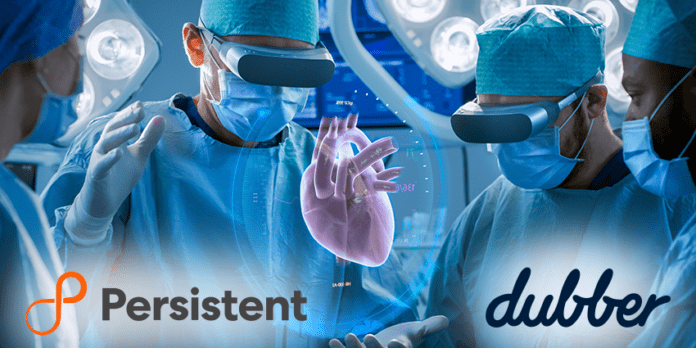How Hospitals are improving communications in order to give a better service
We are at our most vulnerable when we have problems with our health. Every guy struck down with man flu will tell you the unimaginable pain will make you feel smaller than a thimble.
Of course, if things get even worse, the hospitals are there to soothe our ailments. Whether in A&E after you cycle into a parked car, which is not funny in the slightest, or booking an operation to treat a longer term pain.
But when our health has such an effect on how we feel within ourselves, the health institutions we turn to can make us feel much better with a good service, accompanied by effective treatment.
Just like businesses up and down the country, the key to providing a good service lies in data, as Rajasekar Sukumar, SVP and Head of Europe at Persistent Systems says, “When it comes to digital adoption across the healthcare sector, a key goal is to remove silos. One of the main issues for healthcare organisations is that different departments operate on entirely different platforms or systems.
“One area where technology innovation has accelerated is in telemedicine to aid or complement point of care delivery and patient communication, for example, apps for registering test results and video clinics with specialists. However, with a surge in ageing population across the UK and Europe there is potential resistance to technology-driven approaches which must be considered in rollout and adoption plans.”
“Data needs to be readily shared and flow between multiple partners for a complete and holistic view of a patient’s care. There is a huge opportunity for technology leaders to support healthcare companies in building such platforms.”
Embracing new technology
It’s no secret that processing data has led to a lot of efficiencies within the business world, and, in the UK, NHS nurses say that embracing these sorts of technologies could revolutionise patient care.
An analysis commissioned by Vodafone UK, found that the NHS could take £1 billion off the country’s health and social care budget of around £180 billion; enough to pay for 15,400 more full-time nurses.
These advancements are likely to be welcomed by healthcare professionals and medical specialists, including nurses and pharmacists. A separate study of NHS nurses found that 40 percent of them believe the biggest barrier to transforming the health service is a lack of investment in new technology.
With this new technology, Dr Iain McCowan, Director of AI at Dubber, said that poor experiences can be avoided, adding: “Currently, switchboard operators often route calls to the wrong department due to overload or limited context about a patient issue. This can lead to frustrated patients, often resulting in verbal abuse of staff. Hospitals know this is a problem, but they do not have the data to inform a solution.”
“The insights from aggregated cross-departmental conversation intelligence can highlight which departments are receiving complaints outside their domain, providing administrators with the data they require to inform policies and training to improve operators’ ability to route calls correctly. This can improve both patient and staff experiences.”
On top of cross-departmental data sharing, the boom of smartwatches and fitness accessories is also generating data at a quick pace. On top of this, Sukumar says that some trips to hospitals can be avoided, and treatment can be carried out in the comfort of the home.
“Connectivity solutions are increasingly acting as a catalyst for DIY care and we’re seeing early trends of DIY care, overseen by a professional and not “Dr. Google”, become more and more common.
“Many tests, consultations and even treatments can now be carried out in your own home – dialysis and even some types of chemotherapy, for example. This means patients can avoid the risk, cost, and time investment of travelling to hospitals while relieving pressure on hospital staff.”
“It’s clear that the future of healthcare is data-led – data-driven innovations are already helping to improve our health services for both doctors and patients, and they will continue to do so,” said Roland Harvey, Enterprise Account Executive, LogicMonitor.
“Connected devices and the Internet of Things (IoT) are driving improvements in telemedicine, improving the speed and quality of how patients are seen with digital triage and virtual care, such as remote sensors that allow doctors to monitor a chronic patient’s vitals without them needing to visit the hospital. With remote and IoT devices generating copious data for predicting patient needs, doctors can lean on data analysis to improve patient outcomes.
“AI is another technology which is rapidly growing in the health space. AI is already used in online chatbots for patients, as well as in diagnostics and scans, however with more efficient data usage its role could soon be expanded to automatic triage and prescription handling, alleviating busy doctors who can focus on more expert diagnoses. AI and Machine Learning are also being trialled in the pharmaceutical industry, where ML-infused data analytics is streamlining drug testing and prototyping processes.
Security
Naturally, with all this data, security also comes into the fray. Medical records are some of the hardest datasets to get your hands on, or at least they should be, and any breaches can result in serious consequences.
“One of the major concerns related to connecting hospitals is addressing security,” said Sukumar. “In high-paced environments where agility and change are important, a lot of money can be spent to improve connectivity, however, that can often come at the expense of security.
“For example, any smart device, whether it’s a headset or a smartwatch, contains a chip with software and connectivity, leaving it open to vulnerabilities. If we consider medical devices, such as hearing aids, pacemakers or insulin pumps, the same potential vulnerability exists, only with much higher consequences.
“While the loss of data is, for any company, a nightmare situation, there are potentially far more dangerous and even fatal consequences for the patient whose device has been hacked. For example, even if a hospital were to have hundreds of success stories, a few failures could kill the entire adoption of a therapy. It’s therefore essential that robust, trustworthy security protocols are in place and cyber resilience conversations start happening in hospitals.”
Edge Technologies
Looking forward, technologies like Augmented Reality and Virtual Reality are already starting to contribute to training surgeons, offering an affordable way to get doctors trained.
“We’re also seeing augmented reality (AR) and virtual reality (VR) begin to revolutionise medical training, especially with regard to surgery,” said Harvey. “Through the generation of entire virtual spaces with digital twins, we can create risk-free environments for surgeons to practise complex procedures, boosting surgery success rates in hospitals.
“AR/VR can also open new possibilities for triage, as doctors can demonstrate procedures to increase their patients’ understanding. However, for health leaders tasked with making future defining decisions, their job is impossible without the correct observability architecture in place.
“With thousands of separate devices producing an excess of messy data, hospitals need total visibility over their critical data to stimulate further breakthroughs in transformative technology.”
Sukumar increased the scope of potential new technologies that can be used in the healthcare profession to drones. He said “Technology adoption can be extended beyond the expected too, using drones to collect and deliver pathology samples or tests for further analysis to make the diagnosis process much easier for the patient.
“Similarly, this technology could be used to help centres fix supply chain issues between themselves, by sharing tools and equipment where it is needed elsewhere by another team.”
“New IoT-enabled approaches to setting up healthcare devices have emerged to overcome key issues. Using smart glasses, for example, someone can be given clear and explicit instructions on how to install or update a medical device, without that expert having to be in the room.
“Not only does this limit contact between people, but it also eliminates physical borders. The best person for the job can be giving the training, regardless of where they are based in the world. These new approaches to training benefit everyone.”
Reducing Admin
In the meantime, it seems like hospitals are facing similar challenges that every business is facing. Namely, improving the relationship with “customers”, otherwise known as patients!
“Of all organisations, hospitals are one of the most reliant on conversations as they are integral to how they function,” said McCowan. “Whether these are operational or clinical interactions, a significant amount of hospital communication occurs verbally.”
“Traditionally, this has presented a major challenge in connecting hospitals, as the information from these conversations could only be captured by incomplete manual notes or hard-to-access audio files. With overrun staff and distressed patients, this increases risks of confusion over details, which can lead to poor patient experience and disputes.”
“The latest conversation intelligence, integrated into a secure call capture solution, can help ensure that conversation details are accurately captured and available as an integral part of a hospital’s information systems.”
“This can lead to improved patient experience in many ways. Accurate call transcripts can mitigate risks advising patients over the phone, minimise communication errors and prevent disputes. Automated call summaries linked back to accessible media can form part of a more complete patient case record, informing and improving future advice. Administrators can be alerted when calls contain key moments of negative sentiment or complaints, ensuring these receive proper attention and resolution.”



